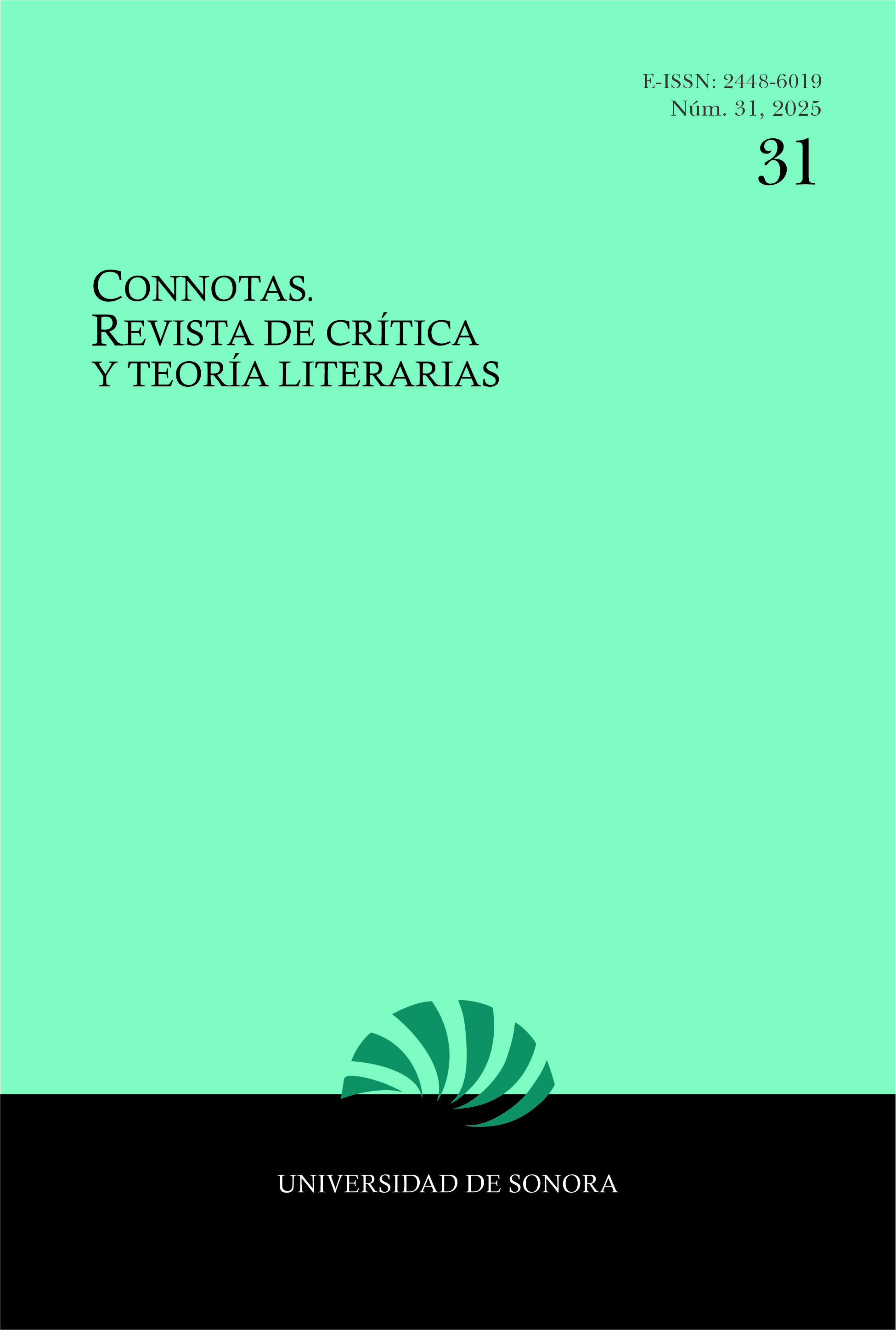An Allegory of Violence Against Women in Art: "La pesada valija de Benavides" by Samanta Schweblin from a Critical Feminist Perspective
DOI:
https://doi.org/10.36798/critlit.i31.562Keywords:
Argentine New Narrative, artistic communication process, literature and feminism, ethics and literatureAbstract
The short story “La pesada valija de Benavides”, by Argentine writer Samanta Schweblin (1978-), develops a critique of the elements that constitute the process of artistic communication: the author, the work, its intermediaries, and the audience. To achieve this, the story utilizes the resource of allegory, enabling the extrapolation of the narrated story to the communication process of Western art. Moreover, the use of allegory allows for the denaturalization of the aesthetic object by pushing the roles of those who have designated it as “art” to the point of absurdity. In this way, “The Heavy Suitcase of Benavides” is an example of how it is possible to denounce the aesthetic process from a feminist critical perspective, capable of naming cultural realities that have long been obscured. Among these are the justifications of violence against women in the service of an artistic dimension, supposedly isolated from the adverse socio-historical conditions in which they lived but which, in reality, the aesthetic object itself can cover up or reproduce.
Downloads
References
Alazraki, Jaime. “¿Qué es lo neofantástico? Mester, vol. 19, no. 2, 1990. DOI: https://doi.org/10.5070/M3192014104
Argüelles, Juan Domingo. El vicio de leer. Contra el fanatismo moralista y en defensa del placer del conocimiento. Laberinto, 2022.
Beristáin, Helena. Diccionario de retórica y poética. Porrúa, 1995.
Castañeda Salgado, Marta Patricia. “Perspectivas y aportes de la investigación feminista a la emancipación”. Otras formas de (des) aprender. Investigación feminista en tiempos de violencia, resistencia y decolonialidad. Euskal Herriko Unibertsitatea, 2019, pp. 19-40.
Drucaroff, Elsa. Los prisioneros de la torre. Política, relatos y jóvenes en la dictadura. Emecé, 2011.
____. “¿Qué cambió y qué continuó en la narrativa argentina desde Los prisioneros de la torre?”. Revista Crítica de Literatura Argentina. El Matadero, no. 10, 2016, pp. 23-40, http://revistascientificas.filo.uba.ar/index.php/matadero/article/view/4969.
Fletcher, Angus. Allegory. The Theory of a Symbolic Mode. Cornell UP, 1970.
Hierro, Graciela. Ética y feminismo. Universidad Nacional Autónoma de México, 2016.
Lagarde y de los Ríos, Marcela. Los cautiverios de las mujeres. Madresposas, monjas, putas, presas y locas. Siglo XXI, 2023.
Leskinen, Auli. “Entre el poder y la locura. De cómo escriben las escritoras latinoamericanas”. Moderna Språk, vol. 92, no. 2, 1998, pp. 211–221. DOI: https://doi.org/10.58221/mosp.v92i2.9793
Portillo Fernández, Jesús. “Lo absurdo: descontextualización, sentido, significado y humor”. Revista de Humanidades de Valparaíso, año 1, no. 2, dic. 2013, pp. 105-134, https://revistas.uv.cl/index.php/RHV/article/view/12/pdf_18. DOI: https://doi.org/10.22370/rhv/20132/12
Quiñones Gámez, Claudia. “Subversión y terror en la nueva narrativa argentina: influencias de lo neofantástico en Mariana Enríquez y Samanta Schweblin”. América sin nombre, no. 27, 14 jun. 2022, pp. 104-119, https://doi.org/10.14198/AMESN.16241. DOI: https://doi.org/10.14198/AMESN.16241
Schmidt, Siegfried J. “La comunicación literaria”. Pragmática de la comunicación literaria, coordinado por José Antonio Mayoral, Arco/Libros, 1987, pp. 195-212.
Schweblin, Samanta. Pájaros en la boca y otros cuentos. Almadía, 2021.
Villanueva, Darío. “El realismo intencional”. Semiosis, no. 24, 1990, pp. 177-199.
Downloads
Published
How to Cite
Issue
Section
License
The authors always maintain the moral and patrimonial rights of their work. They only grant the non-exclusive license of use to Connotas for their first publication. Therefore, the authors may make other independent and additional contractual agreements for the publication of their article, review or other text originally published in Connotas or with modifications (including the title) as long as they clearly indicate that the paper was first published in Connotas. Revista de crítica y teoría literarias. Connotas undertakes not to make commercial use of the texts it receives or publishes.
See also "Copyright and Licences".





